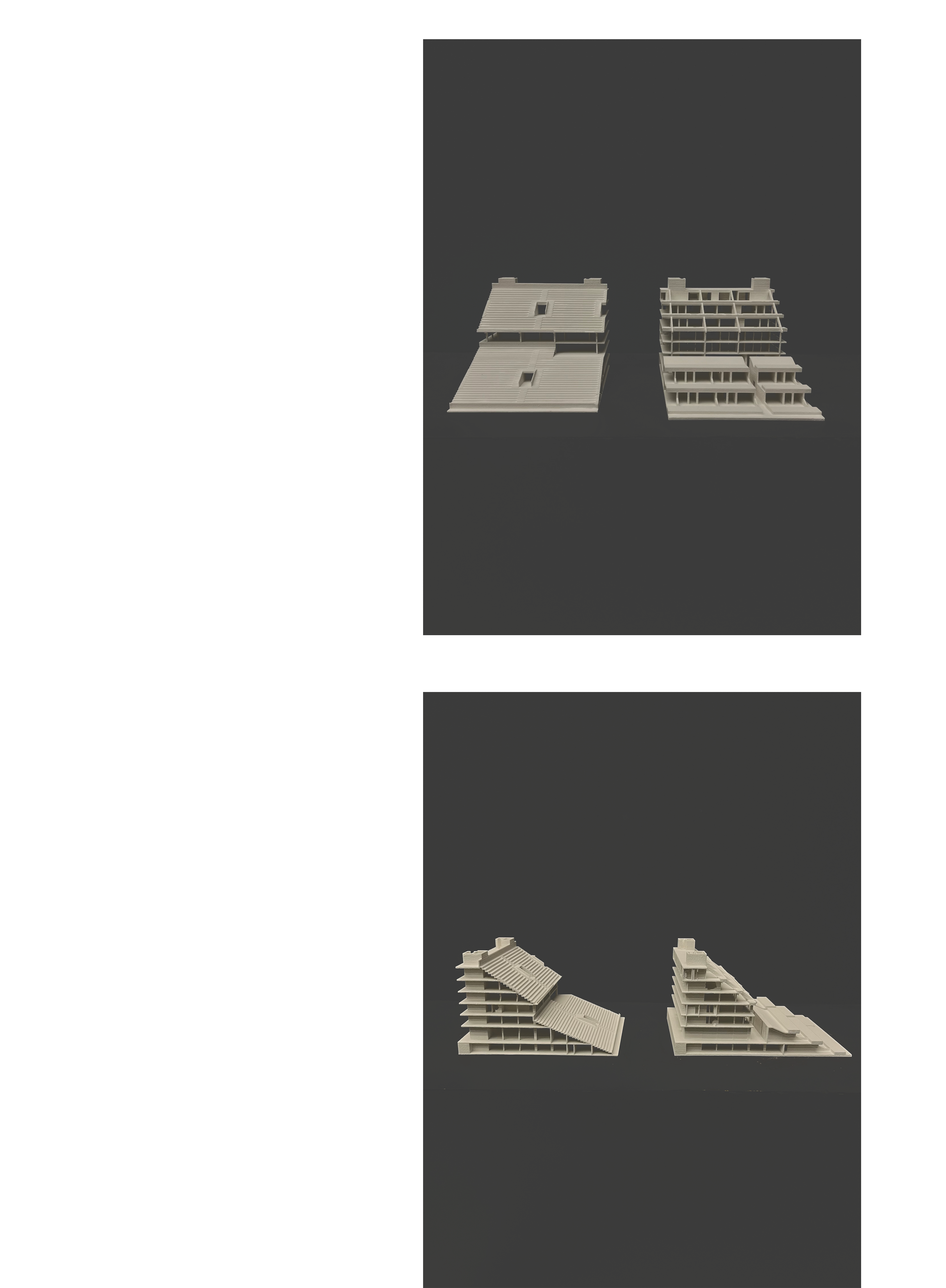Sports competitions such as the Olympics and the World Cup typically build stadia that then rapidly fall into obsolescence, effectively becoming massive, ‘single use’ structures. My thesis challenges this abuse of environmental and financial resources. I explore the potential circularity of the stadium as an architectural artifact, as its uses and cultural contexts change. How can design better anticipate changes, and adapt to new uses? Using the upcoming FIFA World Cup as a possible test scenario, my project is a design of a soccer stadium that anticipates its future use as housing. The design of stadium|housing is seen as a typological rather than a contextual (site specific) project. I propose a more sustainable approach to the design of stadia through simultaneously designing a latent adaptability to housing – while still considering and meeting stadium requirements made by FIFA. By projecting the transformation of a stadium typology into housing, these massive building types could have an extended life cycle for the benefit of the public, the city and its urban fabric, and fit in the context of circular architecture.




